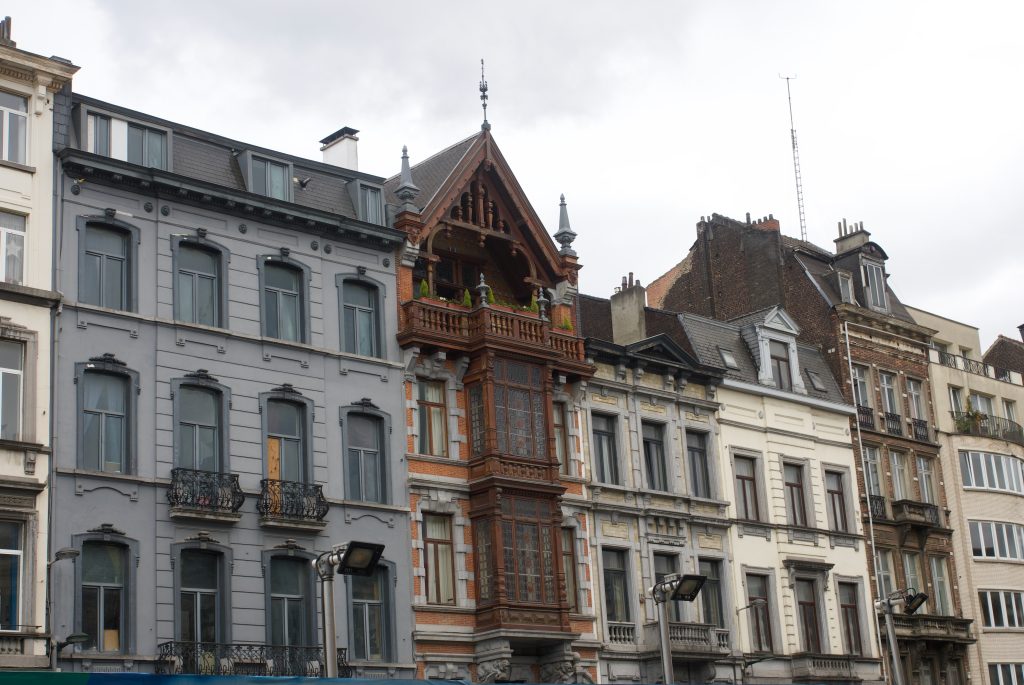We passed an astonishingly good “get over the jetlag” night–we were up for about one hour in the middle of the night, but then managed to sleep until past 7. It helped that our room, however deficient in terms of various small details that baffle us (even though they provided a dish towel upon request, there is no plug for the sink, and the assortment of dishes is rather haphazard), turned out to be very quiet, even though it is on a busy “ring” street around the city center (where the city walls used to be) with multiple traffic lanes going both ways.
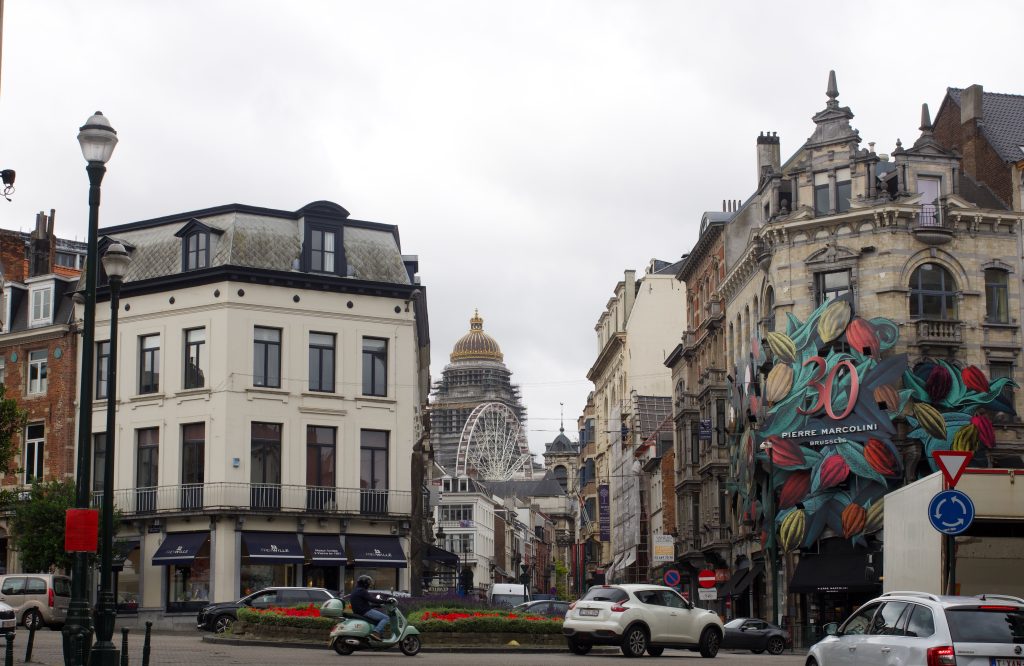
We got ourselves up and had some tea and the pain au chocolat we bought last night for breakfast, worked on our computers for a little bit and the set off for today’s scheduled museum visit just before 10 am. I didn’t plan ahead much, but I did get us tickets to the Old Masters museum that is part of the Royal Beaux Arts museum complex. The Dutch and Flemish “old masters” are not my expertise or main interest, but there was a painting I absolutely wanted to see: Pieter Bruegel the Elder’s Landscape with the Fall of Icarus, which inspired W. H. Auden’s “Musée des Beaux Arts,” a favorite poem of mine that I used to teach all the time. Of course I was a cheeseball and read Mark the entire poem while we were standing in front of the painting.
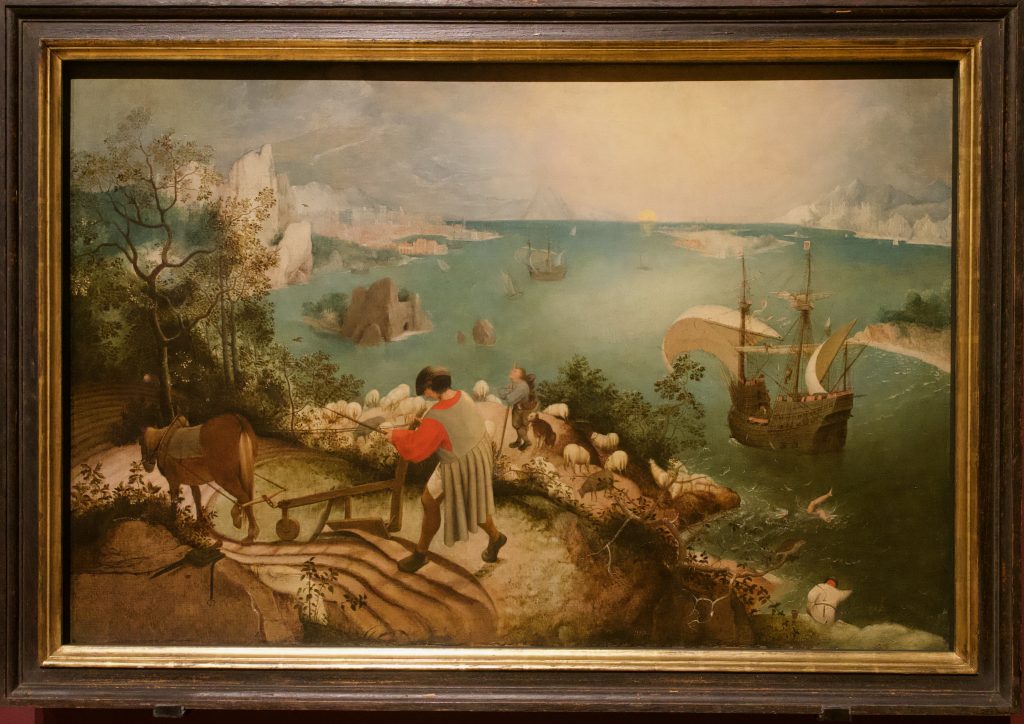
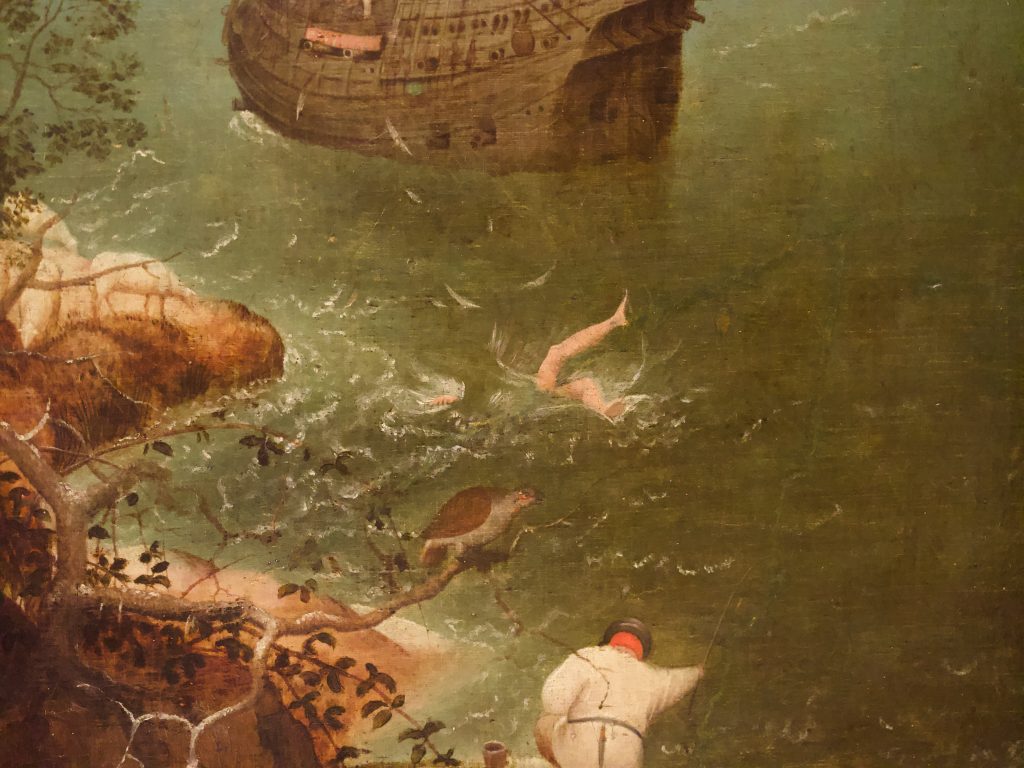
As it had to on the white legs disappearing into the green
Water; and the expensive delicate ship that must have seen
Something amazing, a boy falling out of the sky,
Had somewhere to get to and sailed calmly on.”
We also found several other delights, including the other Bruegel paintings here, one of which, The Fall of the Rebel Angels was fantastic enough to be long attributed to Hieronymus Bosch and very fun to look at. There was also an interactive digital exhibit about this one, and about other Bruegel paintings that are elsewhere and too costly to ever be traveling to Belgium for an exhibit.
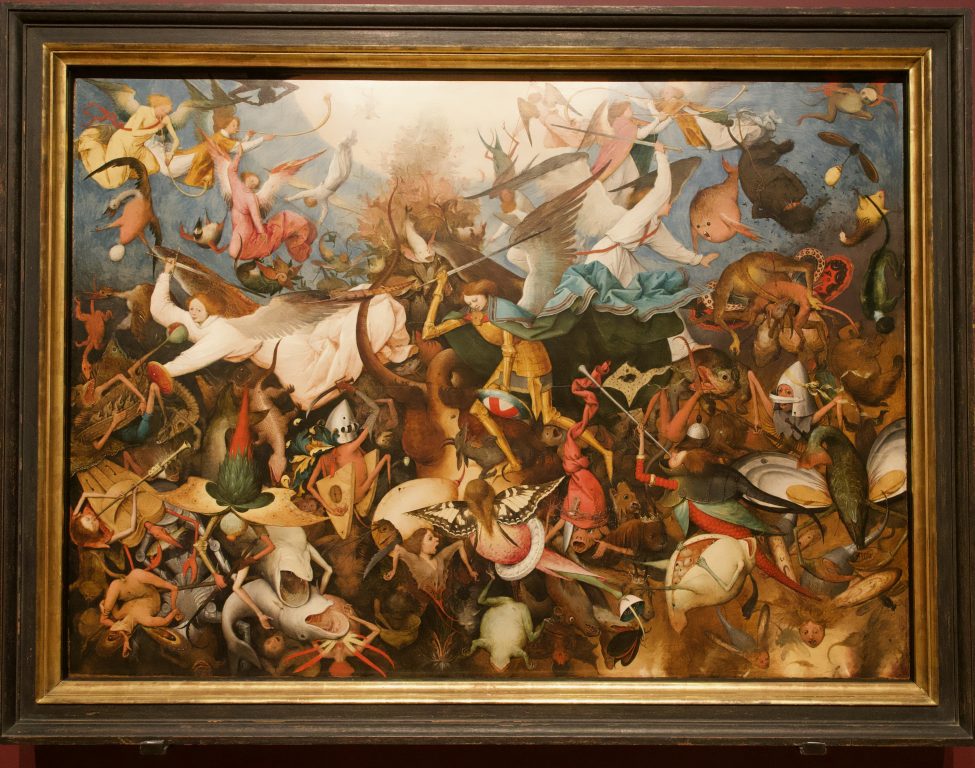
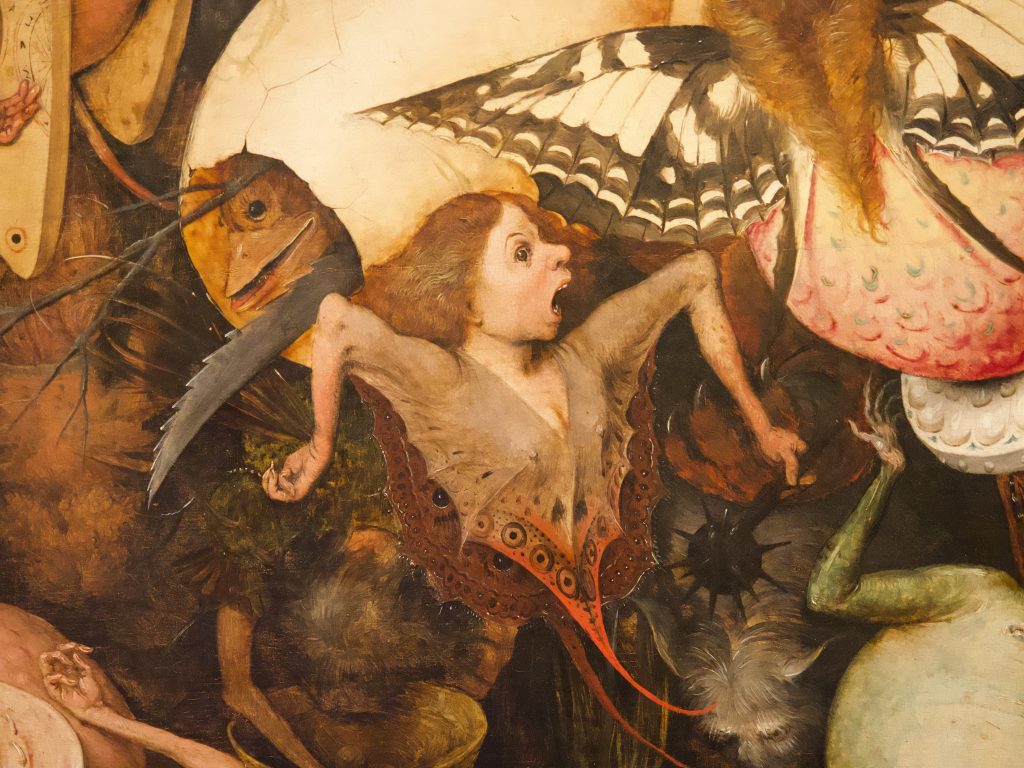
We also saw a number of other famous Dutch paintings from the 15th through 17th centuries, with much square footage of Rubens, whose full-scale paintings tend to be overwhelming and then become meaningless to me. But one that stood out to me was his portrait study of a Black man, from four different angles, which also had a contemporary “answer” piece in a special exhibit room constructed of many loosely connected square tiles that were suspended in the middle of the room, called The Other Side of the Mirror, by . That was really intriguing.
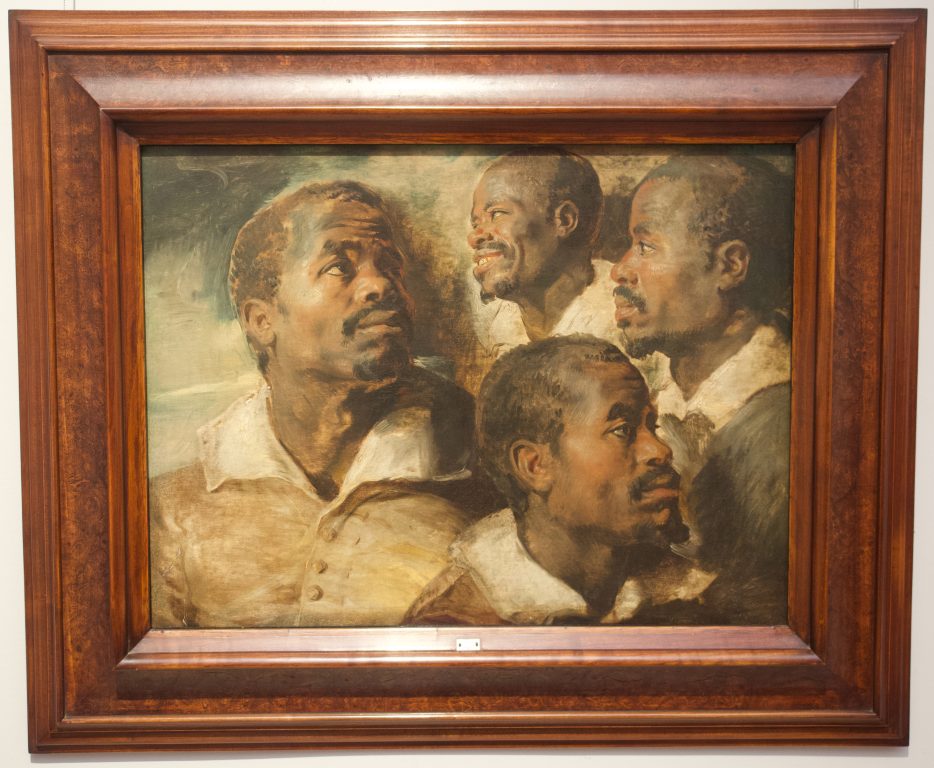
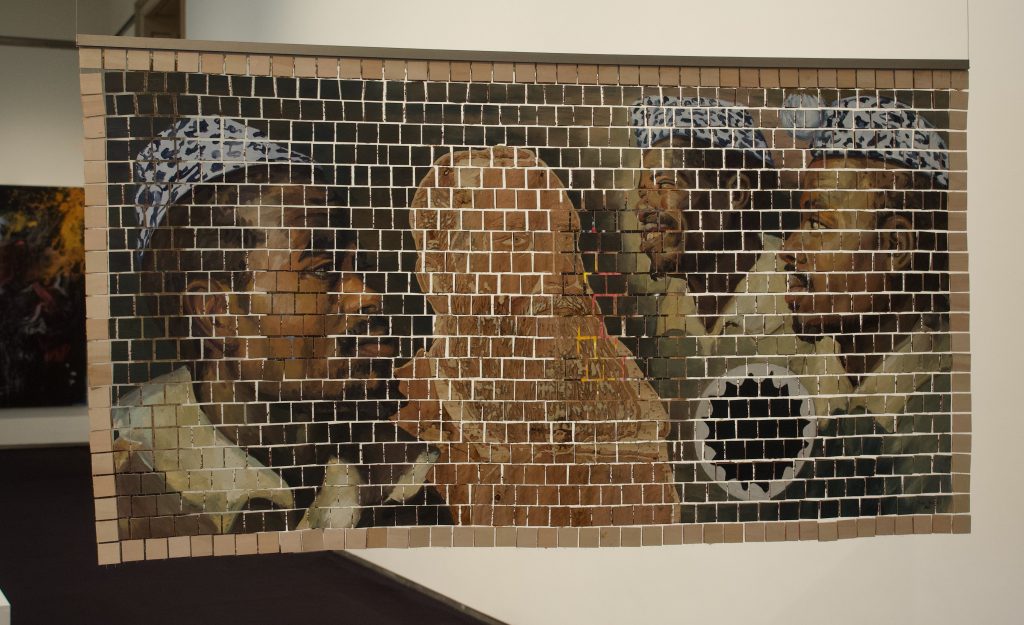

And because there always has to be one surprise “I had no idea THIS was here” famous painting, we checked that off the list, too. Among the exhibits was Jacques-Louis David’s Death of Marat with its dramatic depiction of Marat just after he has been stabbed to death in his bathtub by Charlotte Corday, blood-stained letter in hand (David made up the letter). What I hadn’t realized until I read up on it was that David knew Marat personally and painted this shortly after Marat was murdered.
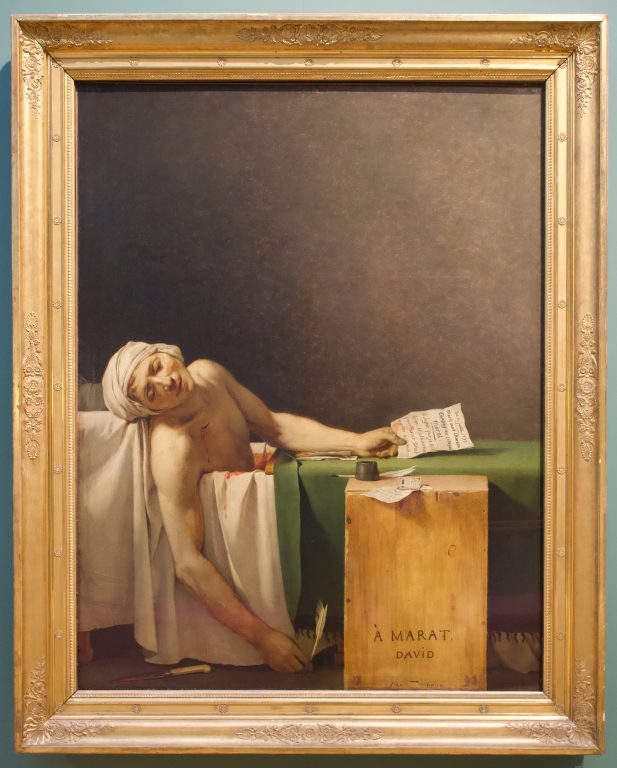
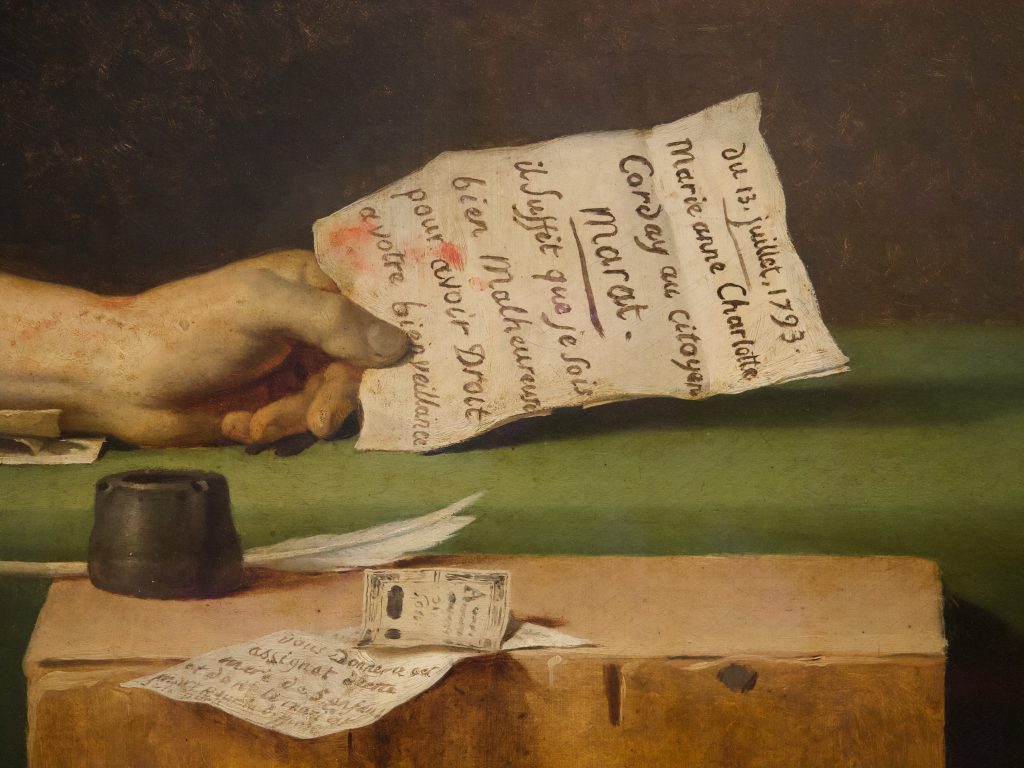
We also had fun finding paintings of no particular fame that we found amusing. Mark found a painting of a “landscape” that was really a face of a woman, and as he pointed it out to me, other visitors caught on and kept telling each other to look again, so when we moved on, there were others still looking. That was fun. Also, we found a couple of portraits that made us imagine a great 1970s pre-mullet Hair Band; their lead guitarist would be the unknown man painted by Charles Wautier (see below).
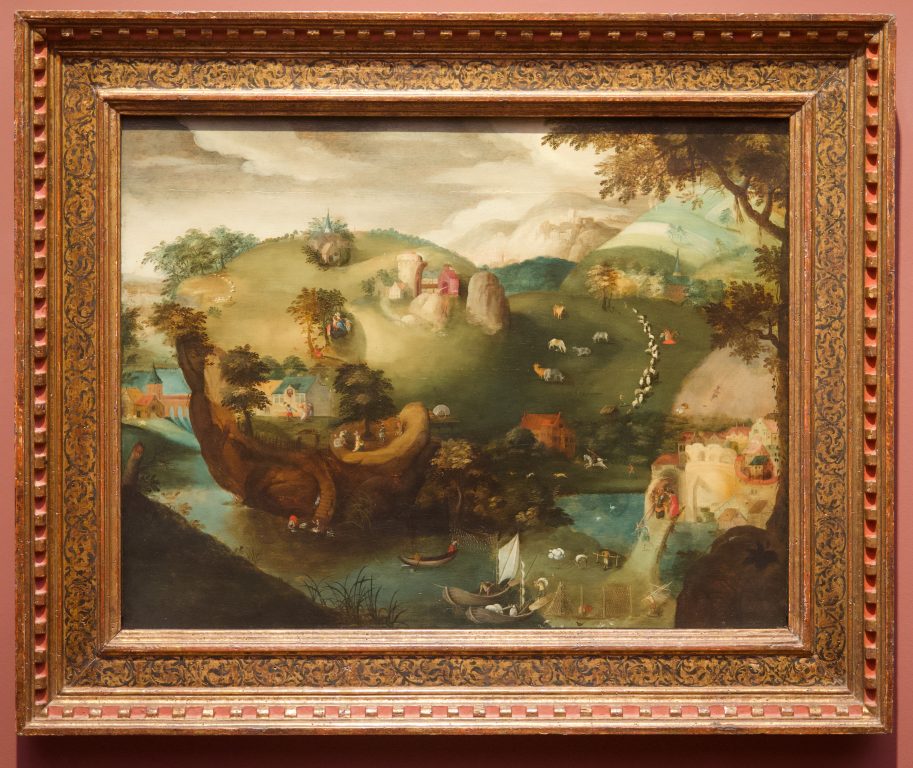
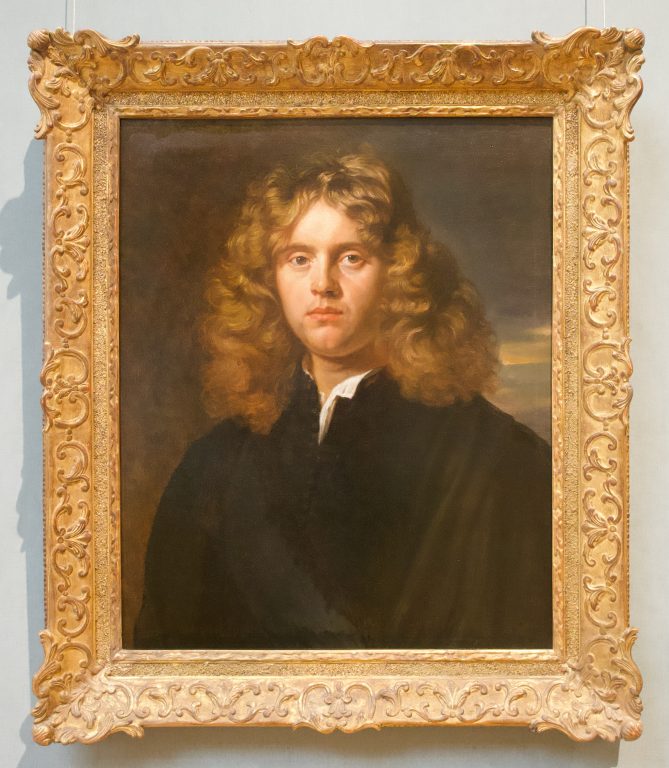
We only spent about two hours in the museum, because our brains got full and our stomachs were empty. We found ourselves a Belgian restaurant with a lunch menu, and had steak and “vol au vent” (a puff pastry biscuit with a chicken-mushroom fricassee) and fries for a fairly reasonable price. Then we walked around downtown a bit, partly to find the underwhelming “Manneken Pis” fountain and its 1985 feminist-protest counterpart, “Jeanneke Pis” a few streets over, which was being toured by a mildly interested group of elementary-age kids when we got there (can you imagine the trouble an American teacher would get into if she/he showed a group of 20 fourth-graders a sculpture of a little girl squatting to pee on a class excursion?).
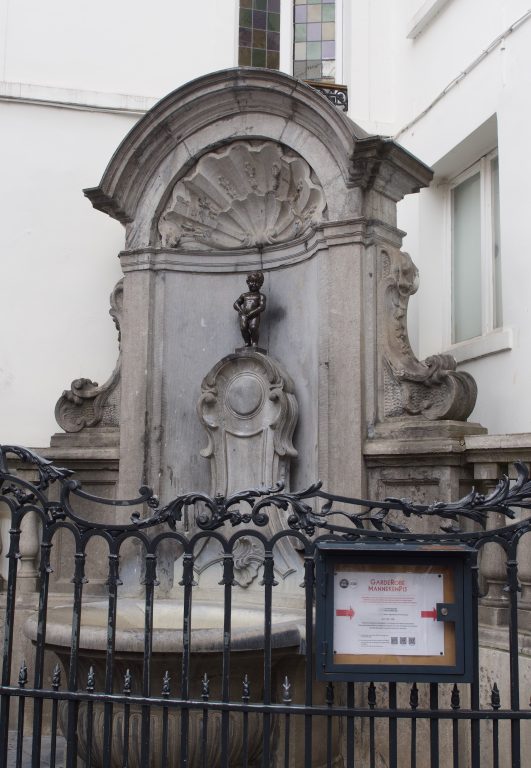
Apparently, he often wears a costume, but he didn’t today.
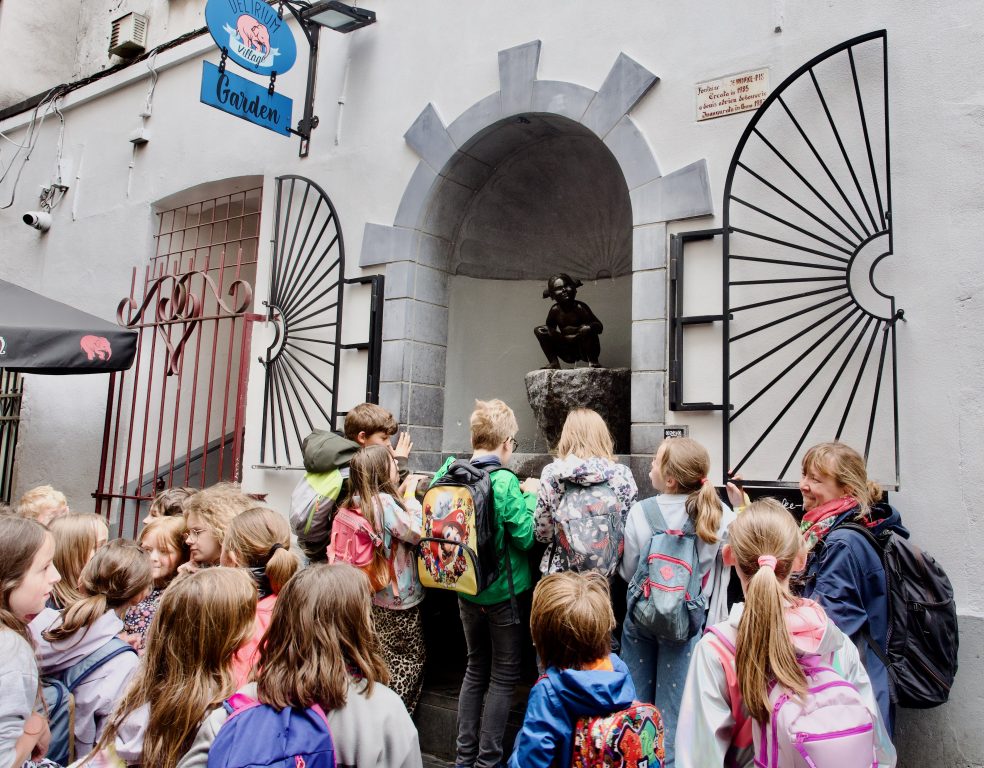
Our ultimate afternoon goal was, however, the Comic Arts Museum. We really only wanted to see its outside, since it is built into one of Victor Horta’s art nouveaux department stores, completed in 1906 and beautifully restored by a group that prevented its demolition in the 1970s. It is a gorgeous space, with the museum and a cafe built into it, and the museum itself was impressive and the exhibits beautifully designed to show the varying processes involved in making comics, and to showcase the amazing Belgian comic book artists from the 1920s until today.
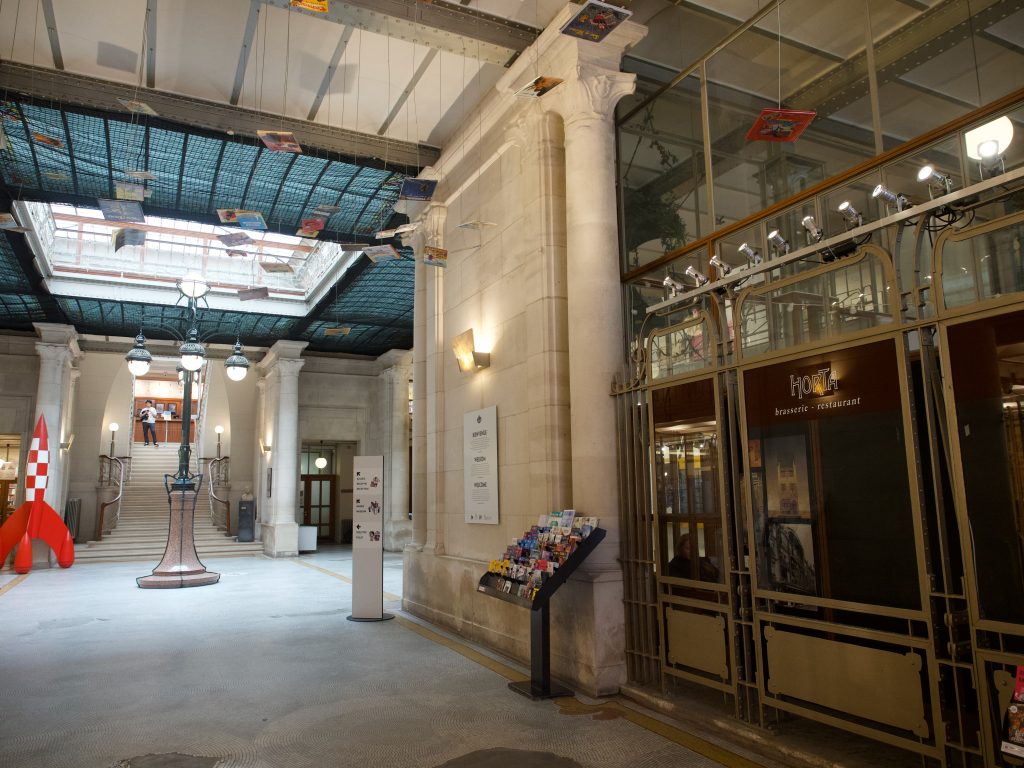
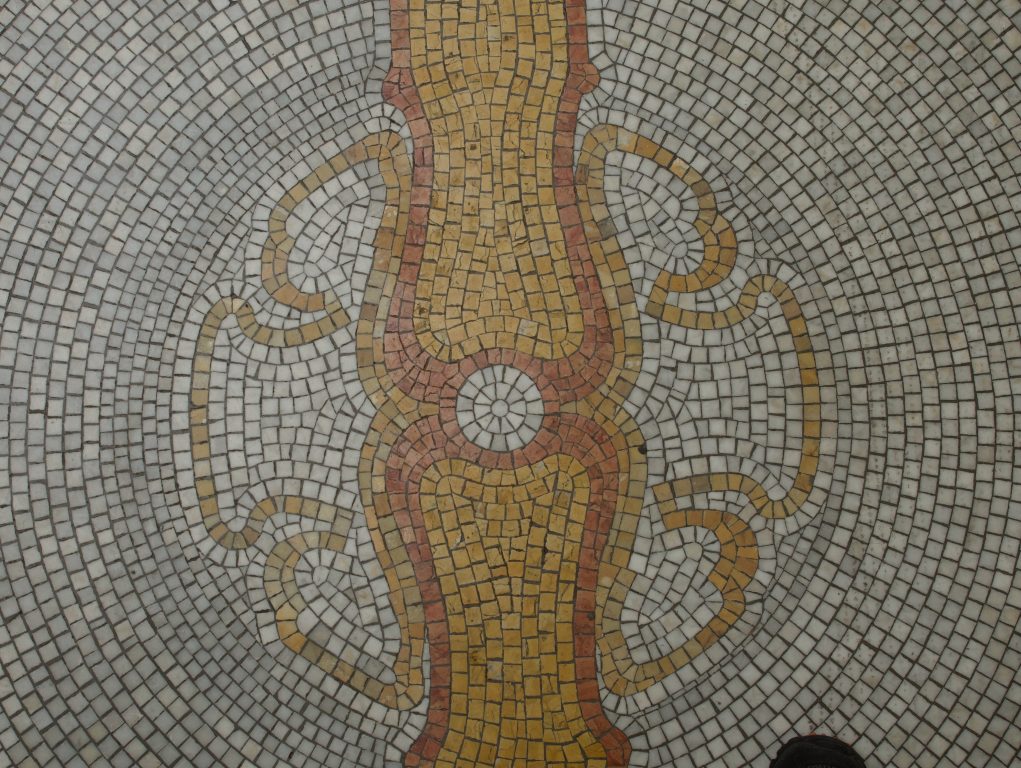
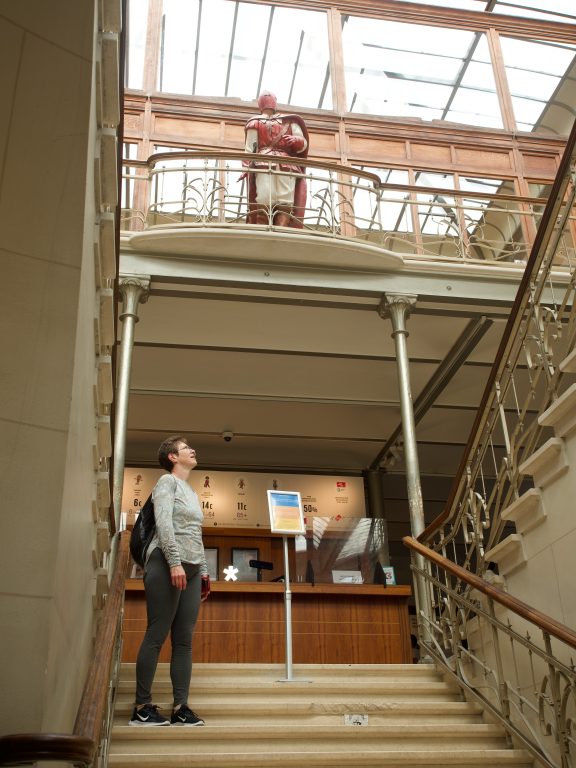
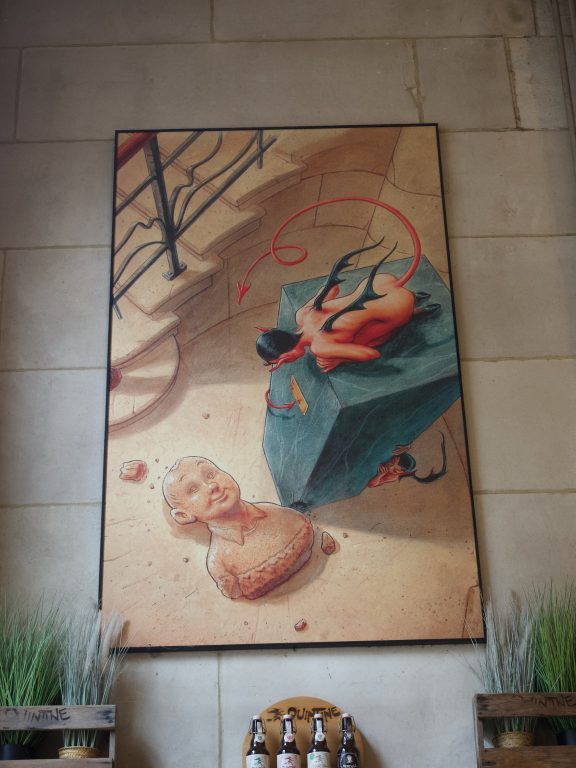
We also went for a more specialized hunt through the museum space: I used to be a huge fan of the Belgian comic artist Franquin and especially of his exotic-animal creation, the Marsupilami. So we looked for images of my beloved Marsu in the displays, the comic/gift shop and even in the café (where they also had excellent apple cake and good coffee).
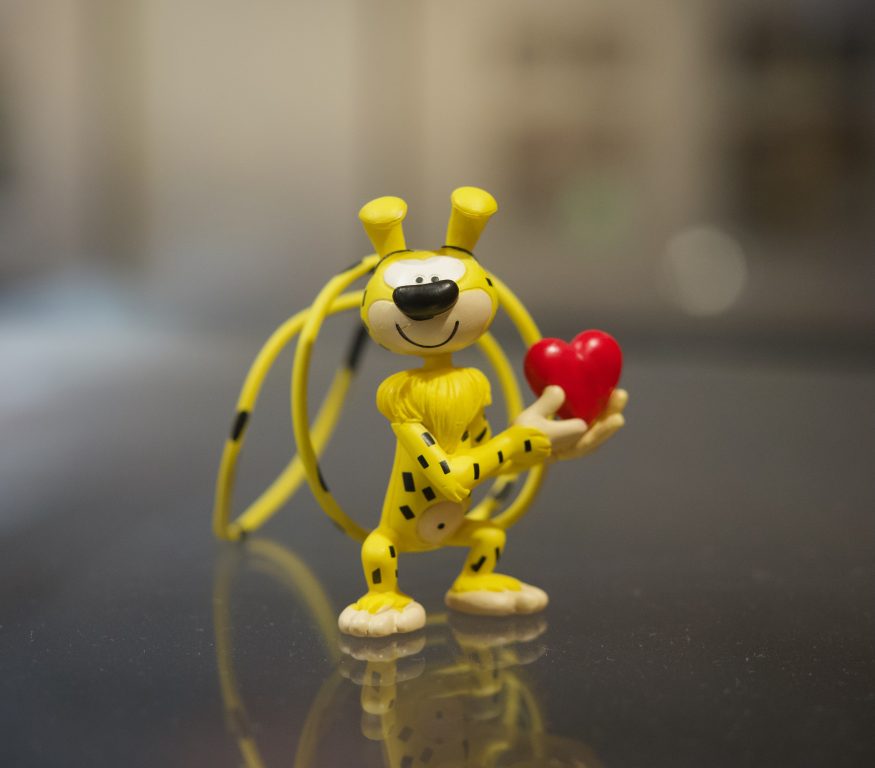
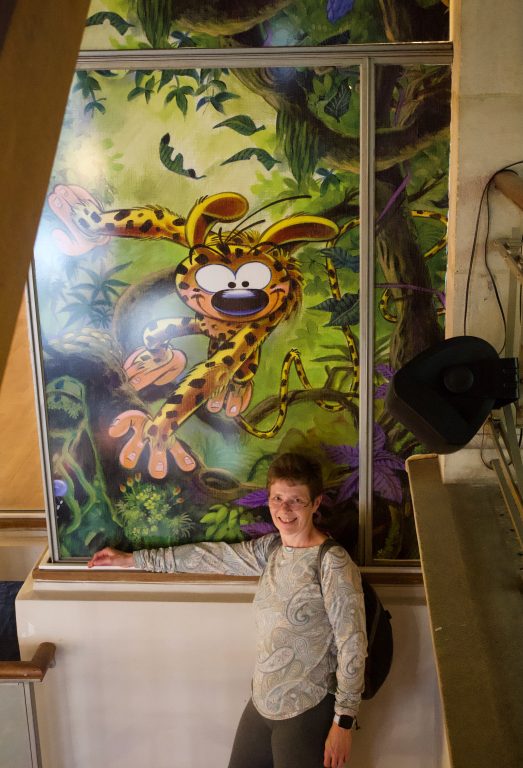
With our two museum visits, we had managed to dodge the intermittent sprinkling, and on our last walk of the day, which led us to the overlook by the oversized Justice Department (Palais de Justice, under renovation SINCE THE 1980s and apparently impossible to maintain), which sits up high above the rest of the city (symbolism, anyone?) through many lively, store-studded streets to a grocery discount store, and then back to the hotel. We heated up some cheap tomato soup we bought and ate it with baguette and herb butter; not exactly a feast for kings but nice and simple after all the eating out. Since it is not exactly nice out (61 F / 16 C and more rain in the forecast) we are going to stay home for the rest of the evening.

